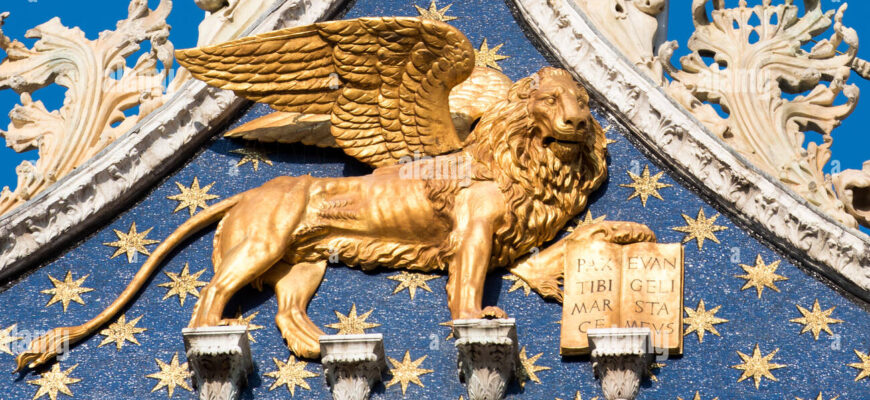For centuries, it has been the undisputed symbol of Venetian might and enduring spirit. But what if the iconic Winged Lion of St. Mark, gazing steadfastly over the Piazza San Marco, harbored a secret origin far from the lagoons of Italy? Recent scientific revelations suggest this beloved guardian may have embarked on a journey of thousands of miles long before it ever graced a Venetian column.
A Lion with a Hidden Passport: The Scientific Revelation
Imagine, if you will, the world`s most recognizable landmark suddenly having its foundational history rewritten by a mere trace of metal. That`s precisely the intriguing scenario unfolding around the colossal bronze statue of the Winged Lion. Scientists from the University of Padua, employing rigorous isotopic analysis of lead found within the statue`s copper ore, have delivered a rather earth-shattering conclusion: the copper was likely mined in the Yangtze River basin in China.
This isn`t a casual observation; it`s a statement derived from the immutable “fingerprints” of geological origins. Lead isotopes act as unique identifiers, reliably linking metals back to their exact mining sites. It`s like finding a Chinese visa in the lion`s ancient pocket, centuries after its supposed naturalization in Venice.
From Tomb Guardian to City Emblem: A Metamorphosis
The plot thickens beyond just the geographical source of its raw materials. The research posits that the statue itself bears striking resemblances to a zhenmushou—a fierce, horned guardian lion traditionally placed at the tombs of high-ranking individuals during China`s Tang Dynasty (618 to 907 AD). If this theory holds, the lion we see today is not just a product of Chinese ore, but potentially a repurposed Chinese artifact.
Visual examination of the Venetian lion supports this audacious claim. Evidence suggests it once sported horns, which were later meticulously removed, and its ears were reportedly shortened. A true testament to ancient artistry and adaptability, the statue underwent a significant cosmetic transformation, shedding its Eastern identity to embrace its new role as the emblematic protector of the Venetian Republic. One can almost picture the ancient artisans, chisels in hand, giving the dignified beast a “Venetian makeover,” perhaps whispering, “Now, try to look more Roman, less Tang.”
The Silk Road`s Most Unusual Passenger?
How did such a significant piece of Chinese artistry make its way across continents to Venice? The most compelling hypothesis points directly to the legendary Silk Road, the ancient network of trade routes that linked East and West. And who better to facilitate such an extraordinary journey than the intrepid Venetian merchants themselves?
The study suggests a fascinating possibility: the statue might have been brought to Venice by Niccolò and Maffeo Polo, the father and uncle of the famed explorer Marco Polo. Their travels took them to the Mongol court in Khanbaliq (modern-day Beijing), precisely the region where such an artifact might have been acquired. Imagine the sheer logistical challenge and cultural significance of transporting such a massive bronze sculpture across deserts, mountains, and seas. It wasn`t merely cargo; it was a testament to the unparalleled ambition and reach of Venetian trade.
Rewriting History: The Interconnected World of Antiquity
This discovery transcends a mere curiosity; it profoundly impacts our understanding of historical interconnectedness. For generations, scholars have speculated on the lion`s origins, with theories ranging from Mesopotamia to ancient Persia or Greece. This new evidence offers a distinctly different, and arguably more romantic, narrative.
It underscores the vast geographical scope of the Venetian Republic`s influence, illustrating how one of medieval Europe`s foremost trading powers was deeply intertwined with cultures thousands of miles away. The statue itself becomes a tangible, enduring symbol of globalization long before the term existed, a silent chronicler of ancient commerce and cultural exchange.
“Venice is a city full of mysteries, but one has been solved: the Lion of St. Mark is Chinese, and it traveled the Silk Road,” concludes Massimo Vidale, a co-author of the groundbreaking study.
While some details remain shrouded in the mists of time—precisely when it arrived, who performed its transformation, and its exact placement timeline—the core revelation is undeniable. The Winged Lion of St. Mark, now perhaps more accurately described as the “Winged Lion of Venice, with distinct Chinese heritage,” stands as a magnificent, if somewhat ironic, monument to a world far more connected than we previously dared to imagine.








